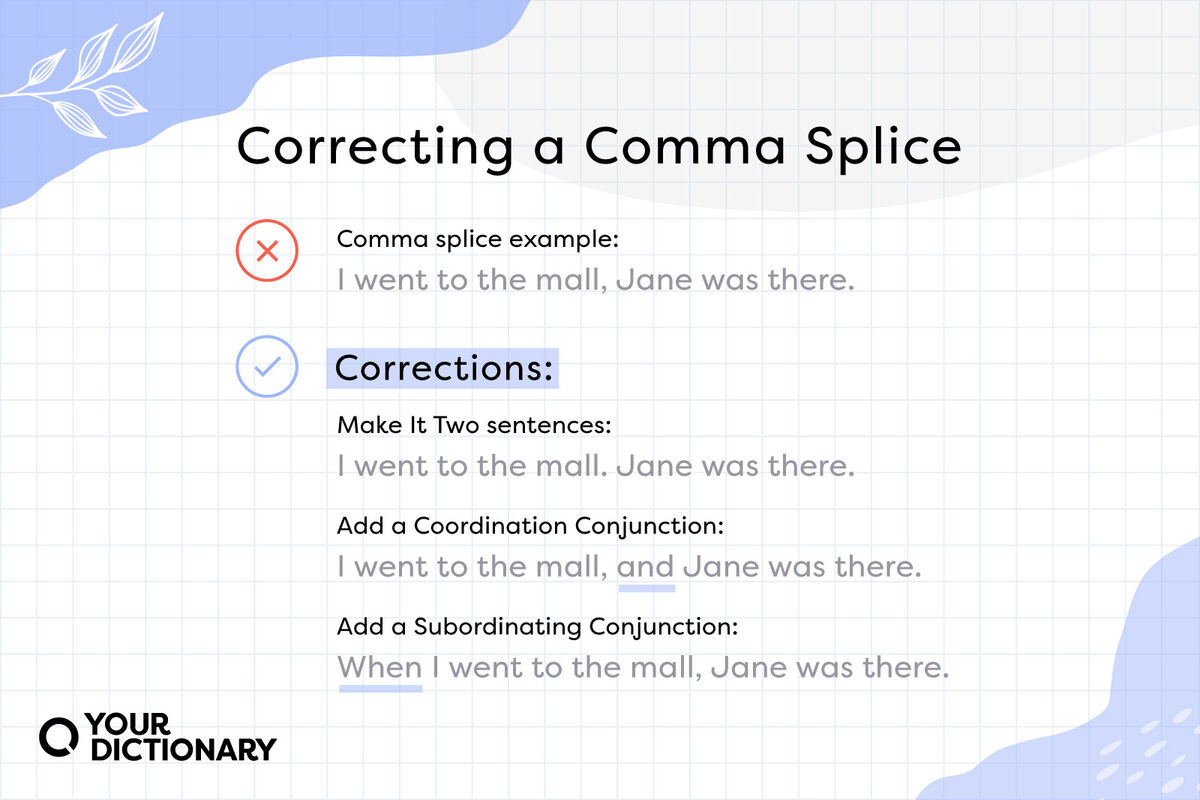

A comma splice is a common grammatical error in English. Writers most often make this mistake when they are trying to "write by ear." It's a common idea that a comma indicates a pause where a reader or speaker should take a breath, but simply adding commas when you feel a break is needed is not a reliable way to make sure you're punctuating your sentences correctly.
In this articleA comma splice is when two independent clauses are incorrectly joined by a comma to make one sentence. To avoid comma splices, you first need to be able to identify an independent clause.
There are three ways to fix a comma splice. First, you can split the part before the comma and the part after the comma into two complete sentences with a period (you could also use a semicolon for a less defined split). Here's how to fix our example from above:
I went to the mall. Jane was there.
Second, you can join two independent clauses by adding a coordinating conjunction such as "and" after the comma. For example:
I went to the mall, and Jane was there.
Finally, you can change one of the independent clauses to a dependent clause by adding a subordinating conjunction. For example:
When I went to the mall, Jane was there.
I went to the mall because Jane was there.
Note that if your dependent clause comes first, you must use a comma to join the two clauses. If your dependent clause is second, no comma is required.
You can split the two independent clauses in a comma splice into two complete sentences with a period. For example:
Alternately, you can use a semicolon for a less-defined split:
AdvertisementI went to the mall; Jane was there.
Check your understanding of comma splices by studying the examples and corrections below.
You can also join two independent clauses by adding a coordinating conjunction, such as and, after the comma. This can provide better flow and keep you from sounding too stilted and robotic. For example:
Error
Correction
I love going to the movies, it's so fun.
I love going to the movies. It's so fun.
She took the boy's cookies away, that was mean.
She took the boy's cookies away. That was mean.
The teacher was angry, the students were too loud.
The teacher was angry. The students were too loud.
I think he's in love, he acts so weird now.
I think he's in love. He acts so weird now.
She was sad when the cat ran away, she doesn't want to get a new one.
She was sad when the cat ran away. She doesn't want to get a new one.
We went to the store, we bought milk.
We went the to the store. We bought milk.
I often walk the dogs on the beach, they love splashing in the waves.
I often walk the dogs on the beach. They love splashing in the waves.
I can't wait to go on vacation, it will be hot and sunny.
I can't wait to go on vacation. It will be hot and sunny.